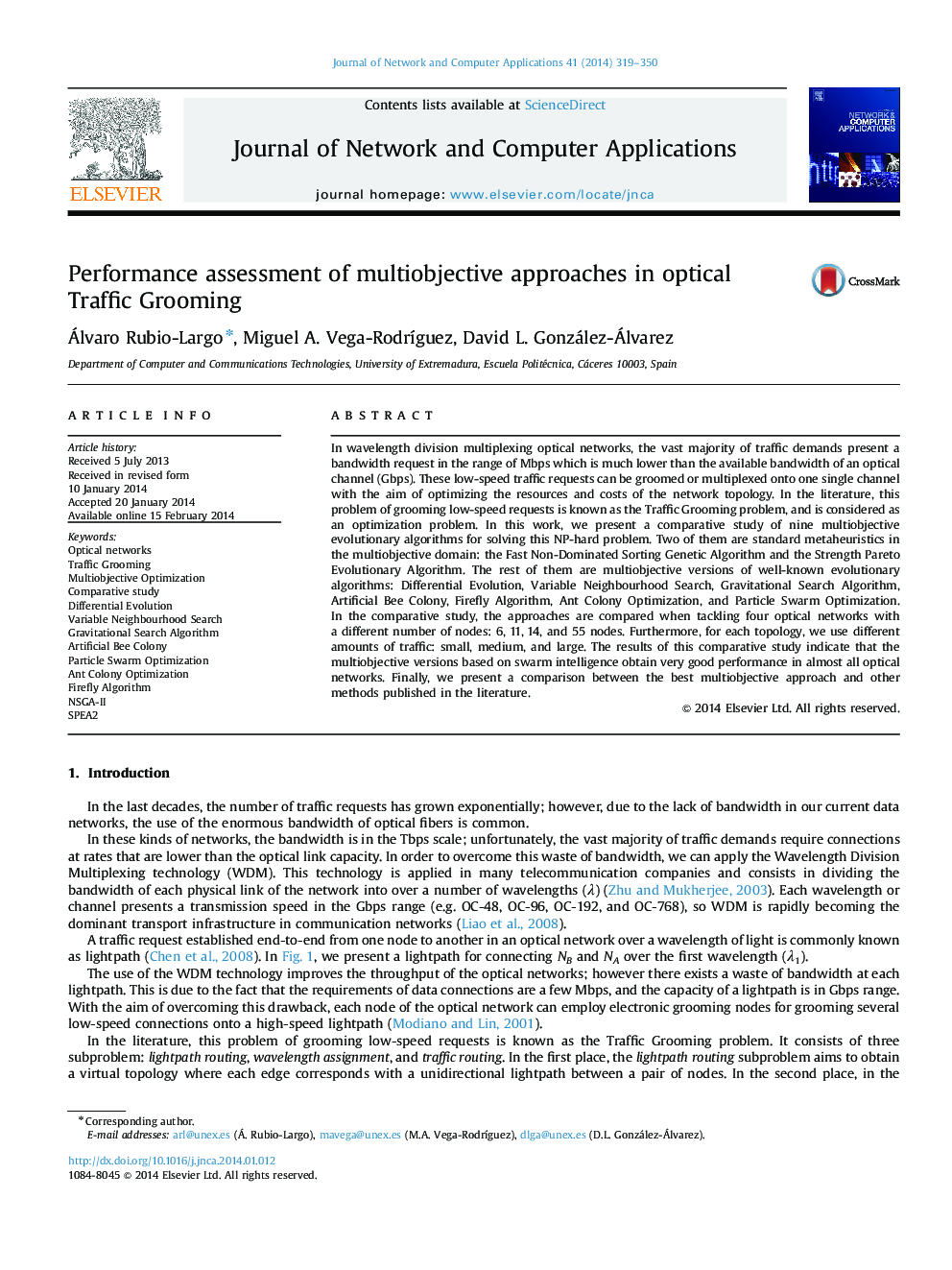| Article ID | Journal | Published Year | Pages | File Type |
|---|---|---|---|---|
| 457234 | Journal of Network and Computer Applications | 2014 | 32 Pages |
In wavelength division multiplexing optical networks, the vast majority of traffic demands present a bandwidth request in the range of Mbps which is much lower than the available bandwidth of an optical channel (Gbps). These low-speed traffic requests can be groomed or multiplexed onto one single channel with the aim of optimizing the resources and costs of the network topology. In the literature, this problem of grooming low-speed requests is known as the Traffic Grooming problem, and is considered as an optimization problem. In this work, we present a comparative study of nine multiobjective evolutionary algorithms for solving this NP-hard problem. Two of them are standard metaheuristics in the multiobjective domain: the Fast Non-Dominated Sorting Genetic Algorithm and the Strength Pareto Evolutionary Algorithm. The rest of them are multiobjective versions of well-known evolutionary algorithms: Differential Evolution, Variable Neighbourhood Search, Gravitational Search Algorithm, Artificial Bee Colony, Firefly Algorithm, Ant Colony Optimization, and Particle Swarm Optimization. In the comparative study, the approaches are compared when tackling four optical networks with a different number of nodes: 6, 11, 14, and 55 nodes. Furthermore, for each topology, we use different amounts of traffic: small, medium, and large. The results of this comparative study indicate that the multiobjective versions based on swarm intelligence obtain very good performance in almost all optical networks. Finally, we present a comparison between the best multiobjective approach and other methods published in the literature.
